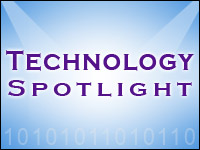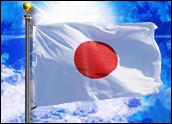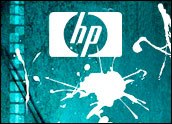
The Morpho butterfly’s highly evolved wings are so unique that scientists at Simon Fraser University (SFU) have teamed up with NanoTech Security to reproduce their iridescent blue coloring for a new anti-counterfeiting technology.

A clever pairing of nanotechnology and entomology — the study of insects — used nanoscale microscopic holes that interact with light to reproduce the butterfly’s shimmering signature wherever a counterfeit-proof watermark is desired: in bank notes, legal documents, merchandise, concert tickets, stock certificates, visas, passports, and pharmaceutical products, to name a few of the possible uses.
“Nobody has ever done this,” said NanoTech Security CEO Doug Blakeway, who also serves as SFU Venture Connection entrepreneur in residence. “We have succeeded, while everybody else is still trying to duplicate or imitate a butterfly’s wing.”
No Pigment Required
The new U.S. $100 bill includes several state-of-the art security features that haven’t yet been unveiled, but probably mirror similar technology, such as hologram strips, security threads woven into paper, raised type, color-shifting and UV-sensitive inks.
The printing arts and the science of inks, however — old standbys in the quest for counterfeit-proof documents — aren’t part of the NanoTech concept.
“The Morpho’s wing absorbs light and gives off the color,” Blakeway told TechNewsWorld, “but there’s no color pigment — there’s nothing like a dye or anything else. It’s a hole that traps light and releases color.”
The new product has attracted the attention of treasuries internationally, and for a few simple reasons, Blakeway explained. “You can’t copy or scan it, you can’t inkjet it on paper. And anywhere a hologram is used, our technology can replace it. It’s more secure. We can put it onto metal, plastic, or paper, and you can’t lift it off.”
Morpho Logical
The appropriately named Morpho butterfly — which morphs, like all of its kin, from caterpillar to winged beauty — lives an achingly short life, roughly 137 days, mostly in the tropical climes of Mexico, Central America and South America.
The creature’s pigment-free coloring — metallic shades of blue and green — reflects iridescence, an optical property common to soap bubbles and even other insects in which the color changes, appearing to shimmer, with the angle of viewing.
Microscopic scales called “iridescent lamellae” cover the top of the Morpho’s wings, leaving the underside a dull brown. The lamellae reflect about 70 percent of light, create the coloring, and are reportedly visible to the human eye from up to one kilometer (0.6 miles) away.
Confined to males in most Morpho species, the wing color probably encourages female butterflies while discouraging male competitors, entomologists believe. Territorial male Morphos are known to chase away rivals.
Though the NanoTech Security technology doesn’t use the wings directly, the butterflies are bred commercially for jewelry, wood inlay, and even ceremonial masks.
The Right Light

The guiding concept behind the NanoTech Security project sounds simple enough — drill small holes, place in right light.
But the project took some years to evolve at the hands of a team that included SFU engineering professor Bozena Kaminska and NanoTech Security CTO Clint Landrock.
“Bank of Canada researchers expressed interest in the new technology,” Kaminska told TechNewsWorld. “Their interest inspired me and Clint, then my graduate student, to develop the nanofeatures.”
The next step involved patents and introductions.
“After Dr. Kaminska and I patented our technology, we were introduced to NanoTech’s CEO, Doug Blakeway, through SFU’s Venture Connection office,” Landrock told TechNewsWorld. “After giving him a presentation on our technology, he thought it held a lot of potential. The three of us formed the company I|D|ME and licensed the nano-optics for use in security documents to NanoTech Security Corp.”
Now dubbed “Nano-Optic Technology for Enhanced Security,” the anti-counterfeiting measures should hit the market sometime in 2012, Landrock explained. That should be good news to nanotechnologists everywhere, who’ve engaged with anidea — the use of ultra-small things to make giant-sized impacts — filled with promise but fraught with slow application.
“I love nanotechnology, but I really have not seen a commercialization of it that can make money in the near term,” said Blakeway. “When this was initially presented to me by Bozena and Clint, I immediately saw their vision.”
The vision made sense in simple terms: Insects and other animals use colorful markings to uniquely identify themselves. Documents could benefit from the same concept.
“I kept thinking of applications for the idea, and how it could be used. Bozena and Clint were only after one application — creating anti-counterfeiting features for banknotes,” Blakeway explained. “I felt this could be the first commercial application of nanotechnology in the world. The potential astounds me.”





















































